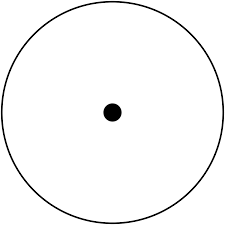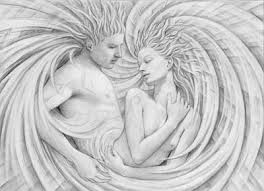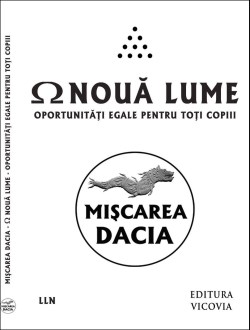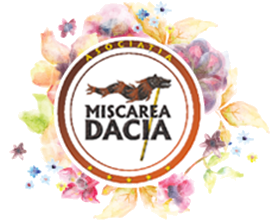 Vă invit să vă alăturaţi grupului Facebook Mişcarea DACIA, ce-şi propune un alt fel de a face politică!
Vă invit să vă alăturaţi grupului Facebook Mişcarea DACIA, ce-şi propune un alt fel de a face politică!Citiţi partea introductivă şi proiectul de Program, iar dacă vă place, veniţi cu noi !
O puteţi face clicând alături imaginea, sau acest link
Posts Tagged ‘Faust’
Hyperian History Of The World (19th Century, Part 3)
Hyperian History Of The World (19th Century, Part 3)
Beethoven and subsequent composers of the 19th century belong to what came to be known as the ‘Romantic’ era of music. This mirrors the ‘Romantic’ literary movement which had begun slightly earlier at the end of the 18th century and had flourished in England with great poets such as Wordsworth, Coleridge, Byron, Shelley and Keats.
Whilst these poets became famous and were celebrated at the time, there was another English poet who remained virtually unknown during his lifetime, yet was one of the most distinctive and visionary poets of all time. This was William Blake. Blake didn’t just write poetry but was also a painter and printmaker who tended to decorate his poetry with elaborate and highly original visual art. Blake was truly an oddity whose poetry and painting bore almost no relation to anything else which was being created at the time. Nonetheless, after his death and to the present day he has become one of the most influential artists of all time.
Considered to be mad in his time, Blake claimed to have had many religious visions which informed his work giving it a deeply mystical, spiritual quality, with several of his works being called ‘prophetic’. Blake was deeply critical of the establishment of his time, these criticisms often being stated quite clearly in his poetry. He despised all forms of organised religion and made his political feelings clear with his overt support for both the American and French revolutions and his friendship with Thomas Paine.
Although he opposed conventional religion, Blake was nonetheless deeply religious, and devised his own rich, complex mythology to express his religious ideas. The majority of his poetry consists of expressions of this complex mythology featuring a wide array of archetypal characters leading to some of the most original poetry ever written. Blake’s work reacts to every aspect of his society. He resists not only the religion and politics of the time, but also the newly developing scientific materialist worldview which Blake considered to be cutting people off from the religious and spiritual truths of the universe.
Blake can be considered a quintessential Hyperian artist, one who completely rejected all of the conventions of his time and developed a highly original, personal style to project the wonderfully creative contents of his mind. Blake wrote, “I must Create a System, or be enslav’d by another Man’s. I will not Reason & Compare; my business is to Create.”
Whilst Blake remained unknown in his lifetime, with the other English Romantic poets becoming far more famous, the real literary giant of the era was the german writer Johann Wolfgang von Goethe, one of the greatest writers of all time and perhaps the most influential figure in all of German culture.
Goethe excelled as a writer in almost every genre, writing four novels, hundreds of poems from short lyric poems to longer epic poems, several plays in prose and verse, works of literary criticism, scientific treatises on a range of subjects as well as his own memoirs and an autobiography. His first novel, ‘The Sorrows Of Young Werther’, became a sensation when it was published in 1774 and Goethe remained a celebrity for the remainder of his life. Several of his poems were even set to music by musical titans such as Beethoven and Schubert.
Goethe’s greatest work, completed just before his death in 1832, was his monumental drama, Faust, one of the most influential pieces of literature in history. Written as a play, the work is really a piece of poetry intended to be read rather than performed. However, it has been staged, albeit with a running time of about twenty one hours! In Faust, Goethe presents his version of the classic german legend of Faust, the scholar who sells his soul in exchange for knowledge. Whilst the traditional legend has Faust condemned for his desires, Goethe goes about the story in a different way.
Faust is split into two parts, the first of which was published earlier in 1808. This first part begins with the demon Mephistopheles making a bet with God that he can lure Faust away from righteous pursuits. Faust is striving to gain all possible knowledge and, although he has read everything, still he yearns for more. He turns then to magic, which causes Mephistopheles to appear, firstly in the form a stray dog who follows Faust home. Once the demon appears in human form, the pact is made. Mephistopheles agrees to give Faust everything he wants, whenever he wants it, so long as Faust promises to serve the Devil in hell after he dies. Faust agrees, stating that he is seeking for one moment so perfect that he would wish it to last an eternity, a moment which he hopes Mephistopheles will be able to provide.
The pact is signed with blood and the two begin their adventures, going out to see the world. Mephistopheles causes Faust to take on the appearance of a young, handsome man and Faust meets a girl, Gretchen, beautiful and pure, whom Faust is able to seduce with help from Mephistopheles. This, however, leads to tragedy. In order to meet with Faust, Gretchen drugs her own mother, who then dies from poisoning. Later, Gretchen discovers she is pregnant and her brother challenges Faust to a duel, leading to his death at the hands of Faust and Mephistopheles. Consumed by sorrow, when her child is born, Gretchen becomes mad and drowns the illegitimate child and is convicted of murder. Faust tries to free her from prison but she refuses to escape. Faust and Mephistopheles flee but voices from heaven announce that Gretchen will be saved.
After this first part of the drama was published, it had an immediate effect on German culture. Beethoven once supposedly said that an opera based on Faust would be the greatest work of art of all time. Sadly, Beethoven did not compose this work. Beethoven, however, only knew the first part of Faust, as the concluding, second part wasn’t published until after Beethoven’s death. If the first part of Faust had captured the german imagination, the second part went far further, containing far more elaborate adventures, deeper levels of mysticism and the powerful sense of a deep secret contained within.
The second part of Faust continues the adventures of Faust and Mephistopheles, seeing them first enter the service of the Holy Roman Emperor, where Mephistopheles solves the Emperor’s financial troubles by introducing paper money. Elaborate festivities result from this, culminating in Faust summoning the spirit of Helen of Troy, his ideal of beauty, from Hades. Once the vision of Helen appears, Faust falls in love with her, yet Mephistopheles whisks Faust away back to his old study. There, they discover that Faust’s attendant, Wagner, has created an artificial, miniature human being, called Homunculus. Homunculus goes with Faust and Mephistopheles on their next adventure, as he seeks to become fully human, although he is contained within a glass flask. This quest culminates with the glass smashing, causing the death of Homunculus.
Following this, Mephistopheles goes to the real Helen of Troy, whom he transports to Faust’s fortress, where she meets and falls in love with Faust. Together, they have a son, called Euphorion, a perfect, beautiful youth who eventually becomes overly bold and falls to his death in an attempt to fly. Overcome with sorrow, Helen disappears back to Hades.
Next, Faust begins a new, grand project to become a master of the land and the sea. He wishes to control the sea in order to bring forth a new land. Faust then dwells in this new land, becoming old and blind. Eventually, Faust wishes only to better the lives of those living in his land. In this moment, Faust realises that this is the moment of pure bliss which he would wish to last an eternity. With this final blissful realisation, Faust dies and Mephistopheles believes that he has won the wager and can now claim Faust’s soul. However, angels suddenly appear and take away Faust’s soul, carrying it upwards to heaven. The final scene shows the progression of Faust’s soul towards heaven, with numerous spiritual figures appearing, extolling spiritual matters concerning the soul of Faust, culminating in the final Chorus Mysticus which concludes the drama: “Everything transitory Is only an allegory; What cannot be achieved, Here it will come to pass; What cannot be described, Here it is accomplished; The eternal feminine Draws us aloft.”
Goethe’s Faust is one of the most imaginative works of literature ever written, overflowing with archetypal imagery, profound ideas and deep mystery, with a strong sense of hidden meanings and powerful secrets. The work is also a magnificent gnostic allegory. Whereas older, more christian versions of the legend of Faust end with Faust being condemned for his desire for the knowledge of god, Goethe ends his legend with Faust’s soul ascending to heaven, in a moment of apotheosis. Goethe celebrates the ambition of Faust to acquire knowledge leading to his becoming godlike himself. Yet, importantly, Faust only achieves this after making his deal with the devil, showing how we must embrace both the darkness and the light if we are to transcend them both. This idea echoes that of William Blake in his ‘The Marriage Of Heaven And Hell’, in which Blake states that progression in life is impossible without the unification of contraries, such as good and evil.
Both Blake and Goethe, therefore, present us with highly imaginative versions of the gnostic message, Blake with a completely original mythology, and Goethe with one which draws on old legends and pagan myths full of archetypal figures and imagery. Like Blake, we must all reject the old conventions of this world and create a vision of the future which we can actualise in the here and now. Like Goethe’s Faust, we must all strive for ultimate knowledge, even if that means embracing the darker aspects of life, and we must traverse this benighted world and all of its dark places, if we are to bathe it in the light of our own inner star.
Selling your Soul
Selling your Soul
The secret history of the world ensures that few people are aware of the coded messages contained in some famous works of art. One of the finest literary creations in history, the greatest treasure of German literature, is Faust by Goethe. It’s the story, superficially, of a man who sells his soul to the Devil in return for ultimate knowledge. In reality, the story is nothing less than an account of the Gnostic struggle for salvation, and few people were better placed to tell it than Goethe, a literary genius, polymath, and a Grand Master of the Illuminati.
Carl Jung considered Faust a key work of Hermetic and alchemical thought, and Goethe as an alchemical Magus. He said, “I regard my work on alchemy as a sign of my inner relationship to Goethe. Goethe’s secret was that he was in the grip of that process of archetypal transformation that has gone on through the centuries. He regarded his Faust as an opus magnum or divinum [great or divine work]. He called it his ‘main business’, and his whole life was enacted within the framework of this drama.”
Rudolf Steiner said that Goethe “attained the supreme mysteries.”
The story of Faust is also a coded reference to the greatest and most special of all the Illuminati’s Grand Masters – the illustrious Simon Magus. If the world had turned out well, Simon Magus would now hold the position in history that has been assigned instead to Yehoshua ben Yosef, the man better known to history as Jesus Christ.
We have illuminated Faust in the section below, and at the foot of the page we have revealed the truth about the wretched souls known as the Ignavi, and the Gnostic meaning of the children’s story The Pied Piper of Hamelin.
Excerpted, page 370
© The Illuminati’s Secret Religion
Artwork by Chris Rawlins

PSIHOCOSMOSUL (4)
UMBRA/SHADOW
Umbra/Shadow este arhetipul NeConștientului Individual. Înmagazinează tot ceea ce este respins de Ego și Persona. Este întotdeauna de același sex ca Persona, adică Persona/Masca unui bărbat va fi însoţită de o Umbră masculină și Persona/Masca unei femei de o Umbra de sex feminin.Umbra este imaginea lui Dorian Gray ținută închisă în cel mai profund seif. Totuși, cu cât este mai mult ascunsă, cu atât îi crește puterea.
Umbra este partea noastră întunecată – necivilizată, animală, primitivă, brută, neadaptată.
O persoană sănătoasă trebuie să se străduiască să-şi integreze Jekyll și Hyde pentru a obține un bun Echilibru al Psihicului.
Umbra poate fi, de asemenea, un depozit al Creativității Reprimate. Băiatul care vrea să fie dansator de balet sau violonist, dar nu poate pentru că prietenii și familia lui consideră asta inacceptabil, își va îngropa partea artistică în Umbra sa.
Umbra este forța întunecată din natură care, dacă este exploatată și sublimată, poate da naștere la o Creativitate incredibilă, iar dacă o lăsăm liberă, poate elibera o Distrugere teribilă, poate provoca Nevroze, Psihoze, sau chiar acţiuni criminale.
Nevroza se instalează atunci când un Ego este atacat de elemente NeConștiente și nu se poate ocupa de ele corect, dar totuși rămâne intact. În Psihoză, un Ego vulnerabil este copleșit de conținutul NeConștientului, atât Individual cât și Colectiv, și se dezintegrează complet. Victima Psihozei nu mai este o ființă umană Conștientă. Ego-ul său s-a destrămat. El și-a pierdut capacitatea de a fi Conștient și acum sălăşluieşte doar în lumea crepusculară a NeConștientului.
ANIMA / ANIMUS
Anima / Animus provine din latină şi înseamnă Suflet.
În timp ce Umbra este de același sex cu Persona, dar are caracteristicile psihologice opuse, Anima (pentru bărbați) sau Animus (pentru femei) are atât aspectele psihologice opuse, cât și sexul opus. Anima / Animus este, de asemenea, cunoscut sub numele de Soul-Image. Reprezentarea noastră internă a „sufletului geamăn” perfect. Aceasta ghidează relațiile noastre cu sexul opus și mai presus de toate, determină cum și de cine ne “îndrăgostim”.
Primul nostru contact cu Anima / Animus este prin părintele nostru de sex opus. Această relație are în mod invariabil o influență imensă asupra dezvoltării ulterioare a Soul-Image. Este posibil să încorporăm multe dintre calitățile părintelui sau dimpotrivă, să respingem calitățile pe care le manifestă.
Soul-Images sunt proiectate în interesele noastre apropos de dragoste – de aceea iubiţii/tele noștri/astre par a avea o calitate deosebită pe care nimeni nu o posedă.
Pentru bărbați, Anima reprezintă Eros (dragoste / sex). Poate fi reprezentată de o fecioară, o curvă, o seducătoare, o femme fatală, o sirenă, o muză – cineva care ne electrizează.
Pentru femei, Animus reprezintă Logos (Raţiunea) și reflectă căutarea femeii pentru Înţelegere și Cunoaștere. Când este fată, Animus este de regulă tatăl ei. Înaintând în vârstă, devine figura ideală a unui Erou. Mai târziu, poate fi o figură respectabilă, cum ar fi un filosof, om de ştiinţă, doctor sau un preot.
Dacă cineva are o Raţional-Persona (thinking type), Soul-Image este Sentiment-Orientat (feeling type) și invers. Dacă e Intuitiv, va avea un Senzitiv Soul-Image și invers.
Anima este partea feminină a bărbatului, femeia sa interioară. Este prin intermediul ei, că înțelege sexul feminin. Pentru o femeie, Animus este aspectul masculin, bărbatul ei interior.
Dacă se întâmplă ceva în neregulă cu dezvoltarea arhetipală a Anima / Animus, un individ se poate identifica cu Soul-Image și astfel, poate dobândi caracteristici ale sexului opus. Jung a considerat acest lucru ca fiind la baza homosexualității și transvestismului. Dacă un bărbat se identifică cu Anima, el devine efeminat și Persona și Anima lui se răstoarnă și se îndrăgostește de bărbați.
În alte cazuri, Anima (feminin) și Umbra (masculin) (sau Animus-masculin și Umbra -feminin în cazul femeilor), se amestecă. Acest lucru poate face ca Soul-Image să se conecteze la sexul greșit sau la impulsurile Umbrei întunecate și periculoase. Aceasta conduce la fenomene precum homosexualitatea non-efeminată, bisexualitatea, bondage, sadomasochismul, dominația și supunerea, precum și toate tipurile de “perversiune” sexuală. În alte cazuri, Anima / Animus se poate asocia cu anumite Obiecte, ceea ce duce la Fetișism.
MANA
“Mana” este un cuvânt polinezian care înseamnă „o forță vie, supranaturală, divină”, care poate alege să dăruiască noroc, puteri magice și mare înțelepciune asupra oamenilor. În ceea ce privește psihologia jungiană, ea se referă la puteri superioare ascunse în profunzimile psihicului pe care le putem accesa și elibera. Intuiţia şi Inspirația provin de acolo, precum și Spiritele și Îngerii Păzitori care pot apărea oamenilor în timp de criză pentru a-i salva.
„Istoricul religiilor și scriitorul Mircea Eliade clarifică faptul că MANA (sau echivalentul său în alte culturi primitive, atât antice cât și contemporane) se găsește în aceeași prezență fizică a lucrurilor. Fiind o ființă animată (vizibilă sau invizibilă) sau inanimată, există pentru omul arhaic o forță de viață latentă; evocarea forței latente a lucrurilor de către preot este însăși esența practicilor șamanice proprii religiilor arhaice” – Wikipedia (Ita)
Aceasta este puterea divinităților Mana care deși ne pot conferi puteri divine, ele pot la fel de bine să ne conducă şi spre nebunie și să ne distrugă, la fel ca și practica kundalini (“Puterea Şarpelui”) ce poate duce la Iluminare sau Nebunie.
Personalitățile sau divinitățile Mana pot părea cu totul copleșitoare pentru Ego, în special pentru un Ego vulnerabil. Ele au caracterul unei forțe externe, superioare. Astfel de divinități pot induce Schizofrenie. Persoanele care devin posedate de ele sunt consumate de Megalomanie. Cineva ca Hitler – un orator fermecător capabil să utilizeze Energia Umbrei și să captiveze o mare națiune – a fost un om posedat, o Personalitate Mana. Cu toate acestea, dacă divinitățile Mana sunt integrate corect în Conştienţă, te pot face un SuperOm.
„De ce monarhii sunt încă populari? De ce țările din secolul 21 au încă familii “regale”? Este pentru că oamenii reduşi mintal proiectează divinități Mana în acești regi și regine, prinți și prințese. Oricine admira regalitatea este un nebun. În mod similar, “profeții” sunt proiecții Mana. Din nou, numai minoraţii mental sunt posedaţi de ei. Lecția este că toate cele mai mari comori pe care le oferă NeConștientul vin cu avertismente. Acestea vă pot afecta serios sănătatea. Toate aceste abilități superioare la care avem potenţial acces trebuie tratate cu mare grijă și integrate cu Conștiența noastră cu prudență, abilitate și control suprem… puţini sunt capabili de aşa ceva.”
Iată un exemplu de Arhetipuri din MATRIX:
Neo trebuie să renunțe nu numai la falsul Persona, dar și la o întreagă lume falsă. Agentul Smith este Umbra lui, Trinity este Anima lui, în timp ce Morpheus, Oracolul și Arhitectul sunt înţelepţii săi consilieri Mana.
SINELE / SELF
Sinele/Self este arhetipul Unității, Totalității și Integrității.
Jung susţinea că „din acest Arhetip a venit ideea Dumnezeului monoteist.”
Puterea mai mare decât Ego, la care avem cu toții acces, este Sinele.
Scriitorii mari, artiștii, oamenii de știință și gânditorii, apelează la această sursă: Sinele Superior.
Psihicul este totalitatea Conștienței și a NeConștienţei, iar Sinele se află în centrul său.
Acesta este Sinele nostru Superior în comparație cu Sinele Inferior reprezentat de Ego. Este Sinele nostru adevărat ce este legat la Inima Vie a Cosmosului.
Jung spunea despre Self că „ nu este numai Centrul, ci și întreaga Circumferință care îmbrățișează atât Conștientul, cât și NeConștientul; este Centrul acestei totalități, la fel cum Ego este centrul Conştientului.“. Self/Sinele este definit perfect de Monada Leibniziană:

Pentru „a închide Cercul”, iată „Generatorul de Monade”: Formula lui Euler, „The God Formula”
În termeni religioși, l-am numi pe Lucifer drept Persona Morală, pe Satana ca Umbra Malefică, pe Sofia ca Anima Înțeleaptă, Logos-ul ca Animus Raţional, și Abraxas ca Sine Superior, Entelehia Cosmică.
Sarcina noastră, ca Ego individual, este de a integra toate aceste componente. Dacă reușim atunci ajungem la același nivel ca Abraxas. Devenim literalmente GOD.
În povestea lui Goethe despre Faust, chipul public al lui Faust este Persona (la care el renunță atunci când își vinde sufletul Diavolului), Mephistopheles este Umbra lui, Elena din Troia este Anima, iar Dumnezeu este Sinele Său Superior.
Sinele/Self este “întreaga persoană”.
Ego este capabil să integreze conținutul NeConștientului Individual, dar nu poate face același lucru cu NeConștientul Colectiv.
Sinele, la ultimul nivel, poate realiza acest lucru.
“Viața mea este o poveste despre auto-realizarea NeConștientului”.
Jung














